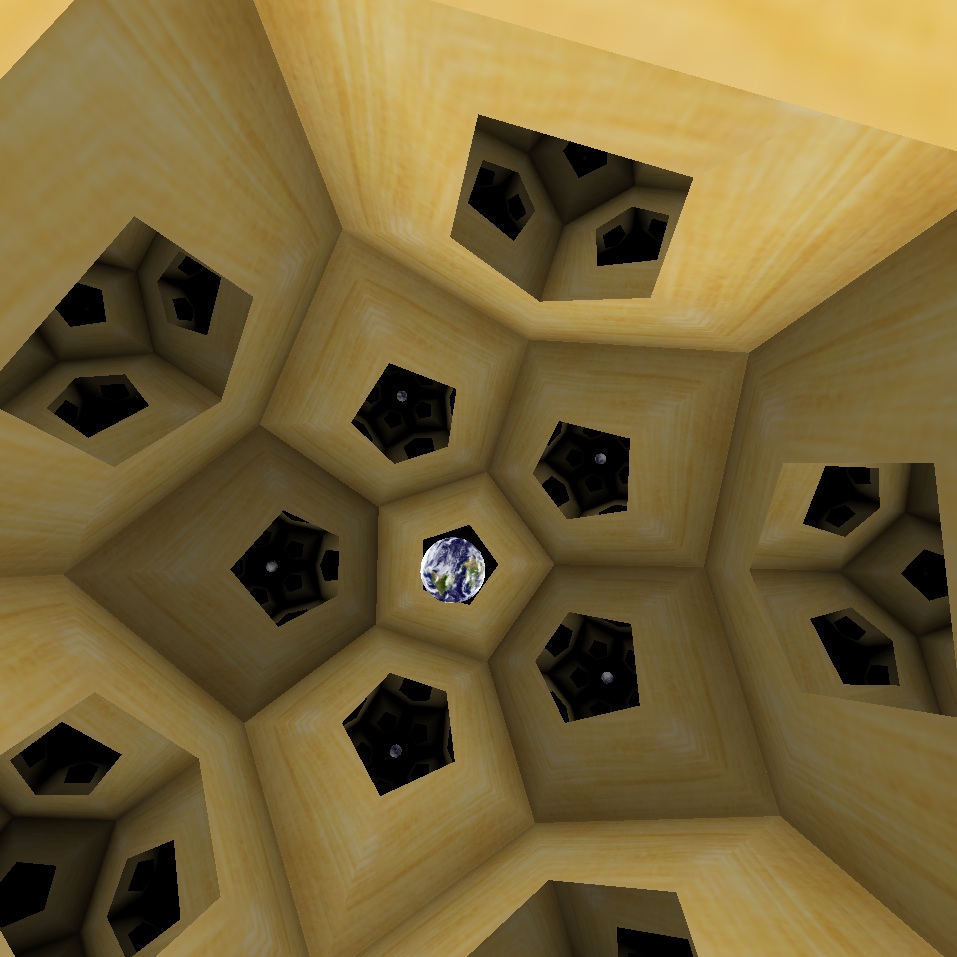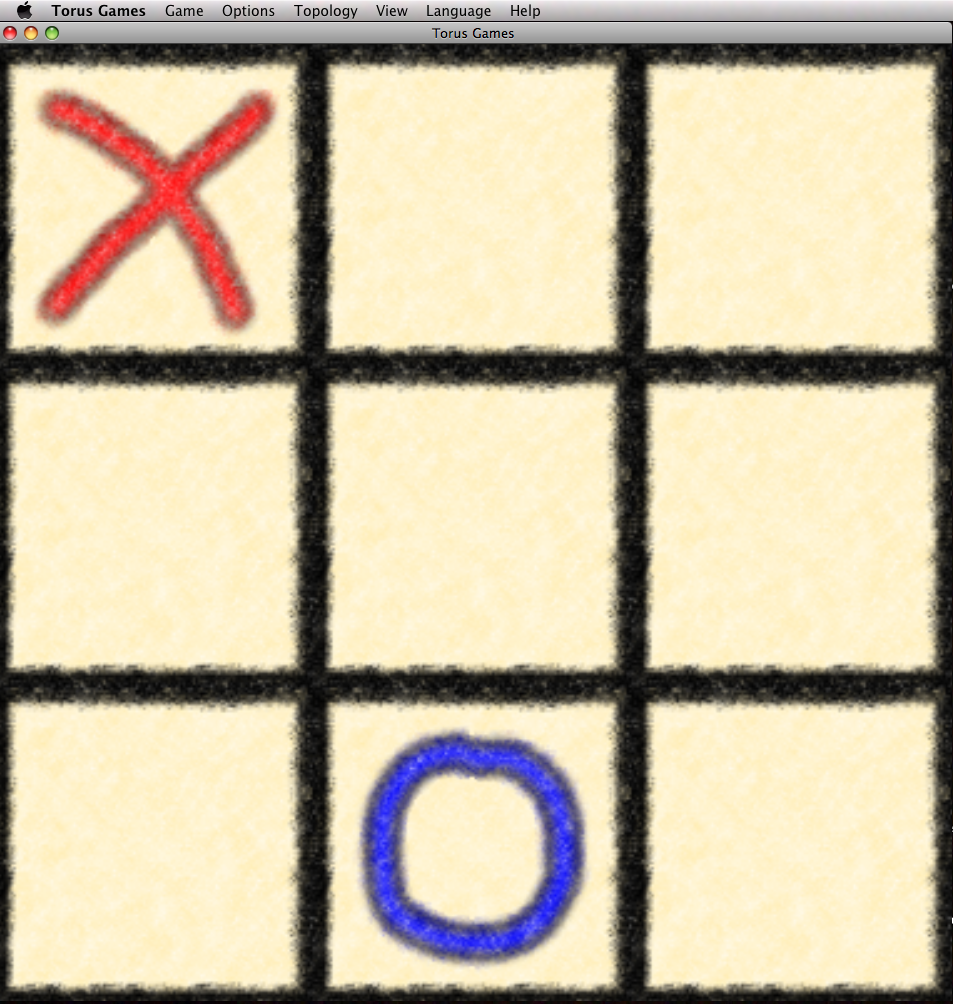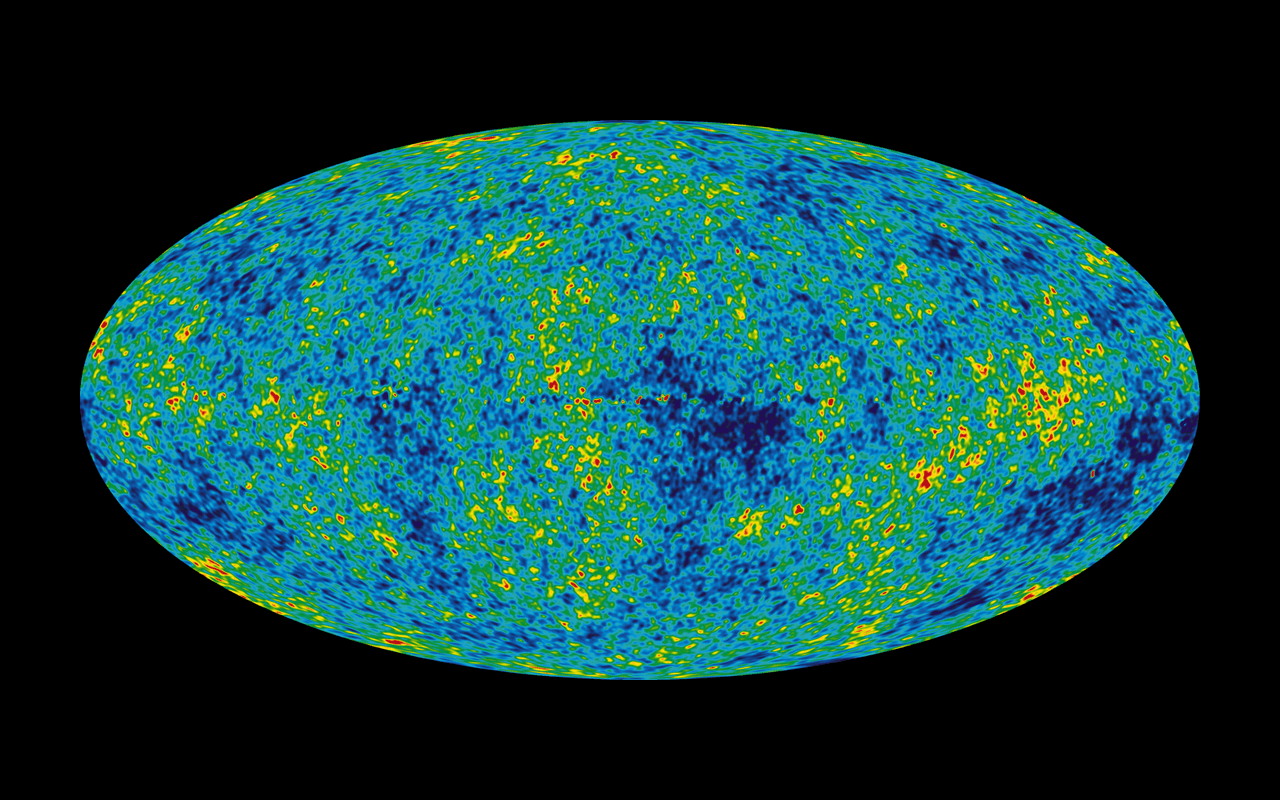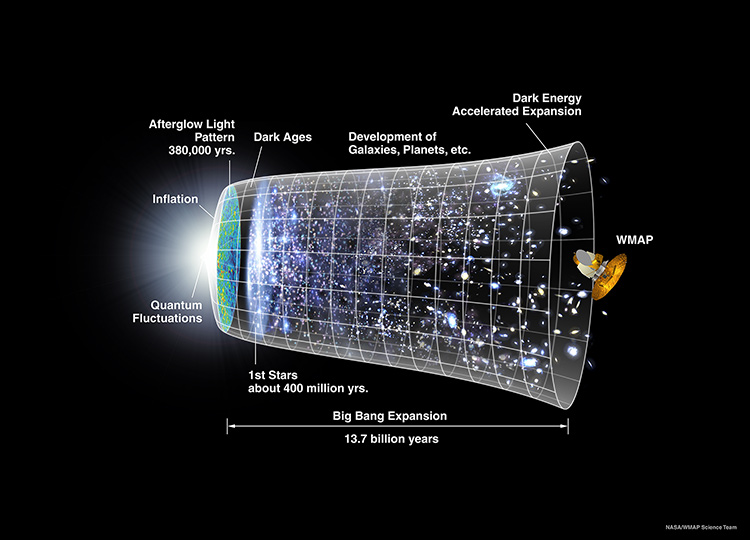In 21st century rhetoric and writing departments, we don't teach geometry. But like the sciences, we are developing computer games. Here in the DWRL, graduate student developers have created Rhetorical Peaks, an interactive game, where students practice rhetorical terms and strategies. It's interesting, then, to compare how different fields use different kinds of computer-assisted gaming. On Thursday, I saw these geometry games, which are visualizations for outer space created by
Jeffrey R. Weeks.

Image credit: Screenshot from Geometry Games H/T to Jeffrey Weeks
A freelance mathematician and author of The Shape of Space, Weeks presented at the University of Texas
to a full auditorium. He let audience members interact with several geometry games, free and
downloadable, which were lessons in spatial visuality connected to
theories on the shape of the universe. For example, the below shot of his tic-tac-toe game, while appearing to
be a two-dimensional, actually works in three dimensions (the
torus-shape). The outer squares meet the opposite side like a
cylinder. This means your x's and your o's make connections beyond the
edges of what you see. The combinations of winning and losing plays
are increased. Forgetting it is 3-D can make you an easy target to
your opponent. Note: You can play another human, or the computer.

Image credit: Screenshot from Geometry Games H/T to Jeffrey Week
Weeks' visualizations became progressively more advanced as the talk went on with various models of how a finite universe might be shaped. Some of more viable theories are for a slightly curved universe (about 1% curved) and a dodecahedron universe (the initial screenshot, above). The interesting thing is that these kinds of visualizations come before the latest data. Based on math principles and current cosmography, these games approximate what patterns of micro-wave data and light data would look like if the universe was curved or boxy, or torus-shaped, etc. Then, the visuals get placed against the patterns of the most up-to-date data. Most of these data are coming from NASA's WMAP, a satellite orbiting the sun on the same path as the earth. The combination of computer programming and satellite data has produced stunning findings.

Caption: Horizon view of microwave data
Image credit: NASA/WMAP Science Team
I was struck with how useful the visualizations were for translating higher-order math and cosmography into layman's terms. I was also struck with the way these 3-D games have such a powerful application in the field of cosmography. It makes me curious as to comparing the implications of 3-D gaming in the humanities and 3-D gaming in the sciences? I don't have an answer here, but I think it would be fascinating to discuss. A hat tip and curtsy to Eileen's recent posts on science and visuals, by the way, which have helped me to think more in this direction.

Image credit: NASA/WMAP Science Team
P.S. Did you know scientists can see 99.997% to the beginning of
time? For those of us who rarely ponder the realities of space-time,
this info is pretty mind-altering




Recent comments
2 years 29 weeks ago
2 years 44 weeks ago
2 years 44 weeks ago
2 years 50 weeks ago
3 years 4 weeks ago
3 years 4 weeks ago
3 years 4 weeks ago
3 years 6 weeks ago
3 years 6 weeks ago
3 years 6 weeks ago